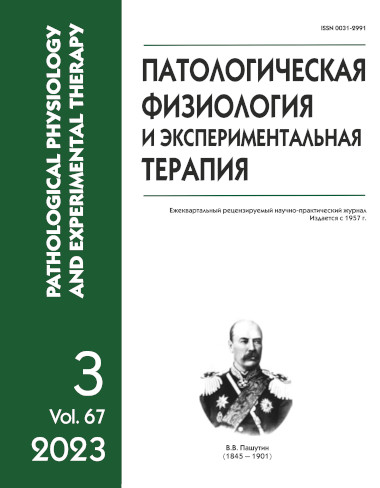Study of the cytotoxic properties of non-oxidized and oxidized bisretinoids of lipofuscin granules in retinal pigment epithelial cells
Abstract
Lipofuscin granules (LG) in the cells of the human retinal pigment epithelium (RPE) contain bisretinoids. These fluorophores are capable of generating reactive oxygen species upon absorption of visible light, and this results ultimately in the formation of oxidized products (oxy-BisRet). Oxy-BisRet contains aldehydes and ketones, which can diffuse from the LG into the RPE cell cytoplasm and there have a toxic effect, even in the absence of light. The aim of this study was to determine the mechanisms of apoptosis that results from the cytotoxic effect of active compounds included into LG on RPE cells following their irradiation with visible light and subsequent dark adaptation. Methods. Experiments were carried out to study the cytotoxic properties of oxy-BisRet under dark conditions by using cultured ARPE-19 cells loaded with LG. The following methods were used: determination of viability, MTT test, DNA comets, fluorescent analysis, HPLC analysis, immunohistochemistry for apoptosis, caspase 7, caspase 8, and BAX. Results. A comparative analysis of the control samples and those pre-irradiated with visible light showed that in both cases, apoptosis was triggered in RPE cells after dark adaptation within 4 days. Apoptosis took either the mitochondrial or caspase pathways however, in pre-irradiated samples with a higher content of oxy-BisRet, this process was noticeably more intense. Conclusion. Thus, oxy-BisRet has a cytotoxic effect on RPE cells in the absence of light and can be considered an aggravating factor in the progression of age-related macular degeneration.






